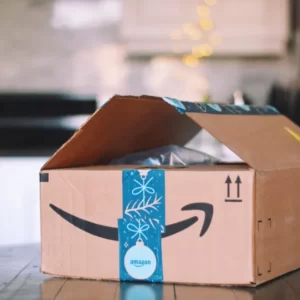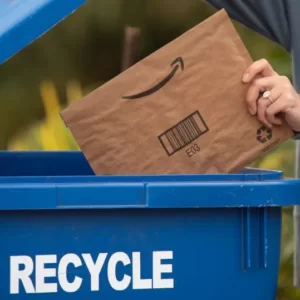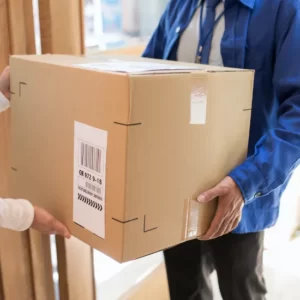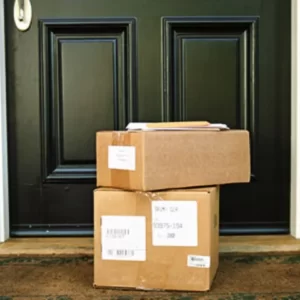The most popular and affordable method of shipping for little, light items is parcel shipping. Parcel shipping refers to shipping lighter, smaller boxed items. Parcel typically refers to packages that weigh 100 pounds or less and can be moved independently.
We will discuss how it functions, its advantages and disadvantages, and how to get ready packages for shipping so that you will have a better understanding of the fundamentals of parcel.
Table of Contents
What is Parcel Shipping?
If you are a company that ships small items regularly, parcel shipping is an economical freight option. Products shipped via parcel shipping are lightweight, have small, uniform dimensions, and are simple for one driver to deliver. A shipment must weigh less than 150 lbs. in order to be regarded as a parcel.
Four facts about parcel shipping:
- Small, light items weighing less than 150 lbs are referred to as parcels. carried by truck or plane.
- For small businesses, package delivery is economical, quick, and effective.
- Vehicles carry loosely loaded parcels that need special packaging.
- For successful delivery, perishable goods require packaging that is both insulating and cooling.
Read More: What is a Packaging Slip?
How Does Parcel Shipping Work?
Due to their diminutive size, parcel packages are picked up from a pick-up location or a drop-off location of your choosing. When making a reservation, select the pick-up option if you want your parcel delivery to be picked up at the origin address. They are then put on conveyor belts for automatic machine sorting. After being sorted, they are manually loaded into trucks. Deliveries made by parcel carriers frequently take place directly to a location or after several transfers.

We will handle the remainder of the shipping process once you have scheduled your package shipment online. Both commercial and residential addresses typically receive packages. The majority of the time, package deliveries halt at a location’s entrance. When booking your shipment, be sure to select those options if inside pick-up or delivery is necessary.
Pros and Cons of Parcel Shipping
Take into account the following benefits and disadvantages before shipping a package.
Advantages:
- Because there are several checkpoints between pickup and delivery, parcel packages are simpler to track.
- You can send a parcel without having to wait for a delivery person to come to you. You have a choice of scheduling a pick-up or bringing your package to one of the many available drop-off locations at your convenience.
- Contrary to LTL freight shipping, parcel shipping is typically more affordable.
Drawbacks:
- Small parcels are more likely to be damaged, delayed, or lost because they are traded so frequently.
- You’ll be charged extra if your package weighs too much or is too big, according to the regulations.
Parcel Shipping for Perishable Items
Parcel shippingis a quick and efficient transportation method, making it ideal for delivering perishable goods. Without being frozen or kept in a refrigerator set to 40°F or lower, perishable foods are unsafe to consume. It’s crucial to package perishable items properly for shipping because they may be exposed to a range of temperatures or humidity levels.
You can stop perishables from spoiling by using the right insulation and refrigeration techniques. Expanded polystyrene foam or foil box liners with reflective coatings are typical insulation materials. Regular refrigeration methods include the use of dry ice and gel coolants. Use gel coolants instead of dry ice when transporting live seafood, such as crabs or lobsters, to avoid contamination.
How to Prepare Packages for Shipment
An analysis of international air parcel shipping showed that single parcels endure frequent velocity changes and sudden height drops, damaging items. Similar to how items move while being transported, courier trucks frequently stop abruptly while moving at high speeds.
When transporting parcel shipments, which are not secured on pallets like LTL shipments are, it is essential to use protective packaging to ensure their safety.
Place your parcel in new or sturdy shipping box containers large enough for the package plus room for bubble wrap, styrofoam packing peanuts or other protective materials. Once the parcel is secured inside the box, you’ll need to use 2″ wide packaging tape to seal the box. Avoid using duct tape or Scotch tape as the adhesive may deteriorate and cause the items to spill or become damaged.
When shipping perishables, it’s essential to keep heat and moisture out and cool temperatures in. Perishable items include fresh flowers, produce, frozen foods, meat, and other products. Styrofoam packaging is ideal for seafood and ice cream, as it acts as both an insulator and a protective barrier.
You must weigh and measure your package after it has been properly boxed and taped. The package must be addressed as you would an envelope, taking into account the length, width, and height of the item. Place the sender’s address in the top left corner of the box, followed by the recipient’s address in the middle of the space. Include a 24-hour phone number for both the recipient and the shipper in perishable parcel shipments as well.
Difference Between Parcel and LTL Shipping?
LTL typically handles bigger packages than parcels. LTL shipments are usually stored on pallets, while parcels are loaded directly onto a truck. Here are some key differences between parcel and LTL shipping:
1. Damage and Loss Prevention
Parcel shipping has a higher chance that it will become lost or damaged than LTL
shipments. The smaller size and higher packing volume of parcels make them more advantageous.
2. Tracking and Checkpoints
Parcel packages go through several checkpoints, so carriers are updated more
frequently than LTL packages, which make the package simple to track. However, with LTL shipments, there are fewer checkpoints, which increases the likelihood of a secure delivery.
3. Costs
Due to the larger size of LTL packages, shipping costs are higher. Many carriers have
additional charges tacked onto original pricing, such as extra fees for correcting an address mid-delivery.
Final Thoughts on Parcel Shipping
For a small business that regularly ships lightweight goods, parcel shipping offers a cost-effective and speedy way to deliver items to your customers.
You need the appropriate packaging supplies, though, to make sure your packages arrive safely.
You May Also Like: What is Route Package Protection?
FAQs
How Long Does It Take to Ship a Small Package?
United States ground package delivery typically take between 2-9 days to arrive at their final destination. However, for a fee, many carriers provide expedited and same-day shipping options.
What is the Difference Between a Package and a Parcel?
A box of goods that is personally delivered to someone else is referred to as a package. a “care package”. On the other hand, a “parcel” can imply that a product has been meticulously packaged, sealed, and ready for transit. An item or items that are packed up are referred to as a “package” in general.





